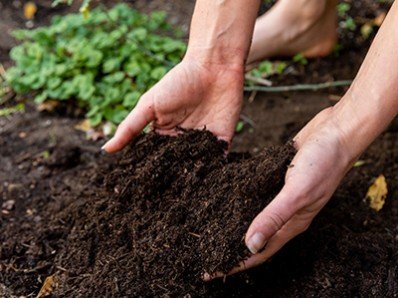Test Your Soil-Why?
Author Ellen Vande Visse
TEST your SOIL
1. Why? To know your soil’s chemistry
pH levels (acidity or alkalinity) and adjustments
NPK needs (nitrogen, phosphate, potassium)
Ca, Mg, and trace element needs
Proportional needs, that is, how much of what, or application rates.
2. Avoid expensive guesswork.
Too much fertilizer can be as detrimental as too little. You could severely alter your soil’s mineral balances. This will lower yields and attract pests. Imbalances can take years to correct.
3. Where to obtain a soil test:
For a conventional NPK and pH analysis, I suppose you could use an inexpensive home test kit for a rough idea of your basics.
But for more accurate and complete analysis of your soil, I recommend utilizing a soil test lab and getting recommendations. YOu will want to know your levels of organic matter, biological life in the soil, calcium, magnesium, trace mineral content, CEC, and other minerals.
4. Soil pH
The pH is a measure of soil water and concentration of hydrogen ions. A neutral pH is 7 on a scale of 1-14. Most flowers and vegetables grow best within a pH level of 6.3 to 6.8, or slightly acidic soil. Gardening books list the specific plants that love a more acidic or alkaline soil. The pH level affects mineral availability in your soil. You may have plenty of necessary minerals in your soil, but they may not be chemically available if the pH level is too high or too low. Thus the pH will significantly affect plant growth and yield.
To raise the pH, use calcitic lime, not dolomite lime, unless your soil test recommendations call for the Mg levels in dolomite lime. Don’t use hydrated lime, which is caustic and may burn seedlings. Choosing the right lime will avoid serious disrupting mineral balance and availability. Lime contains calcium (Ca) and some magnesium (Mg). If you substitute wood ash, crushed oyster shells, or marl in place of ground limestone, use only a dusting.
To lower the pH, add livestock manure decayed pine needles, oak leaf mold, peat moss, cottonseed meal, or decayed sawdust from oak, hemlock, or cypress. Some authorities recommend using the mined element sulfur (S), but others vehemently discourage it.
5. After all is said and done,
Soil tests vary widely.
There is no substitute for basic replenishing of nutrients
There is no substitute for a healthy soil foodweb.
Add compost to your soil to unlock nutrients and provide them in the proportion that your
plants need them during the growing season.
You can send the same soil sample to 5 different labs, and obtain 5 different results and recommendations. Soil is an inexact science, and different labs analyze with different tests. Choose a lab and stick with it through several years.
Some experts, like Eliot Coleman, say soil tests are controversial. He does not advocate getting a regular soil test and following that recommendation. He urges you to simply replenish your soil each year with compost and organic amendments. Choose amendments that are most available and least soluble. Maximum availability means they are ground finely. Least soluble means water does not leach them away; they stay put so that microbes can release them slowly and steadily.
Biological farmer Arden Andersen tells you not to worry about adjusting pH. It will change as nutrient levels change. Put your efforts at restoring proper nutrient and microbial balance in the soil and the pH will take care of itself. If you add compost every year, it serves as an excellent soil neutralizer and stabilizer as well as fertilizer.
Soil Foodweb proponents Dr. Elaine Ingham of www.soilfoodweb.com and garden writer Jeff Lowenfels look at pH as a result of organic mulches available. The pH measurement is dependent upon whether your soil is more fungal or more bacteria-dominant. Mulch with grass clippings and you have more bacteria-dominant soil. If you avoid cultivation and mulch with wood, leaf, and stalk materials, the soil is more fungal. See Teaming with Microbes by Lowenfels and Lewis, 2006
So should you test? Yes, especially if you are beginning with a new location or new soil. Find out what nutrients you have. Start your fertility program with this basic analysis. You need a basic foundation for fertility. You also need food to sustain the microbes of the soil foodweb. This means organic matter.
In the following years, keep adding the organic matter and the macro- and micronutrients to replace those used in crops. By year 3 and 4, gradually decrease the amounts of purchased and imported amendments. Move towards sustainable local sources like legume cover crops, compost, and compost crops. Monitor with a soil test every 3-4 years. The labs which specialize in biological and organic agriculture can best provide the recommendations for your goal of healthy, balanced soil using organic amendments.
See SOIL TESTING SERVICES post for labs I recommended for soil analysis.

